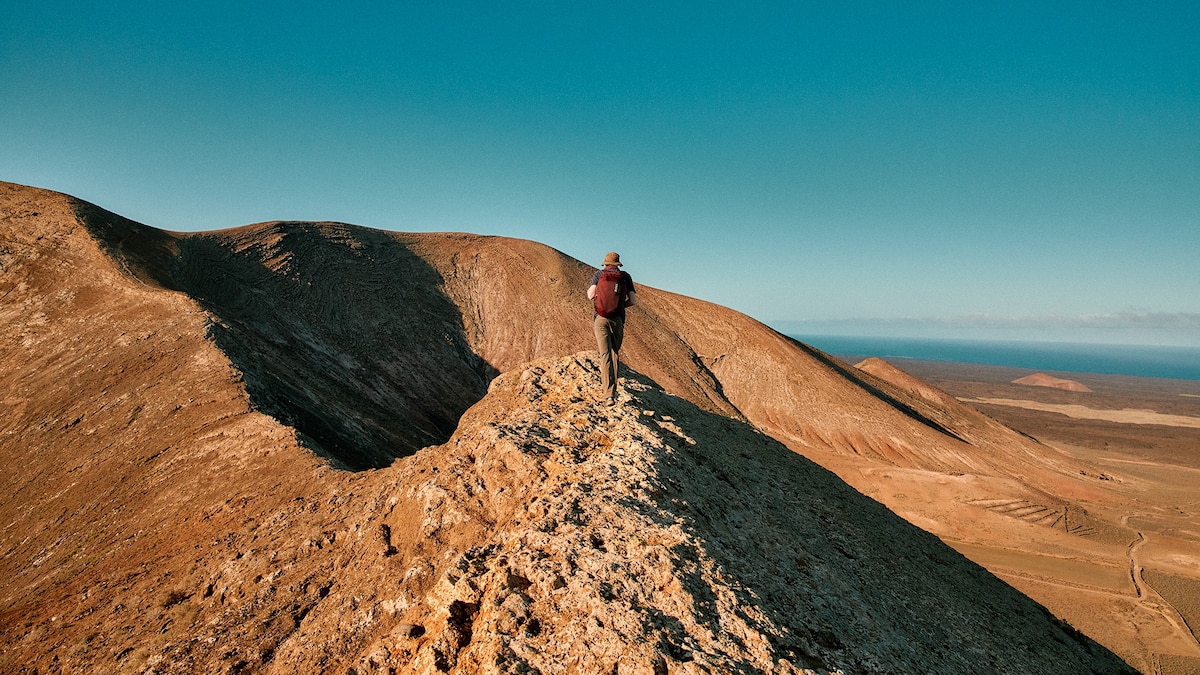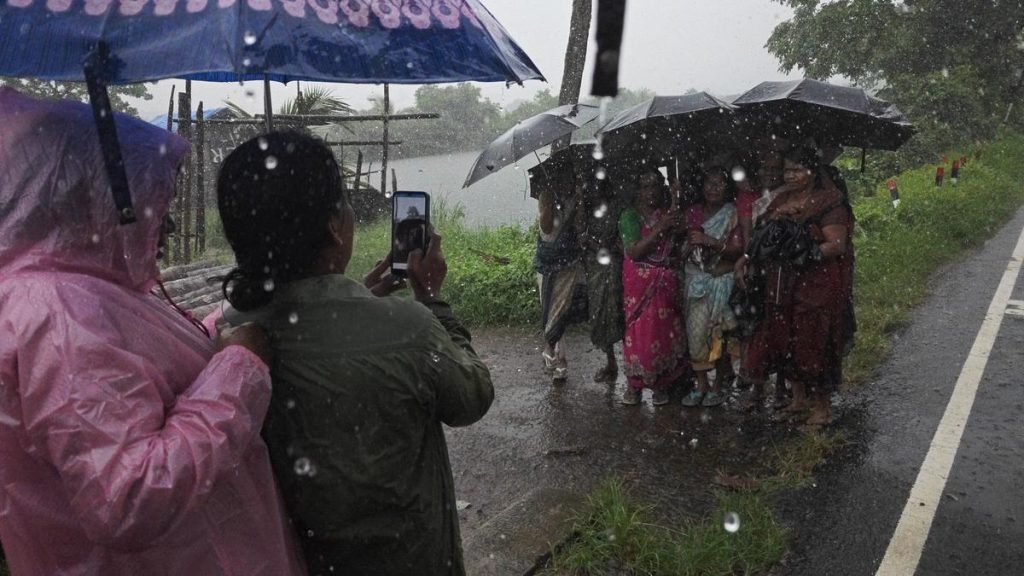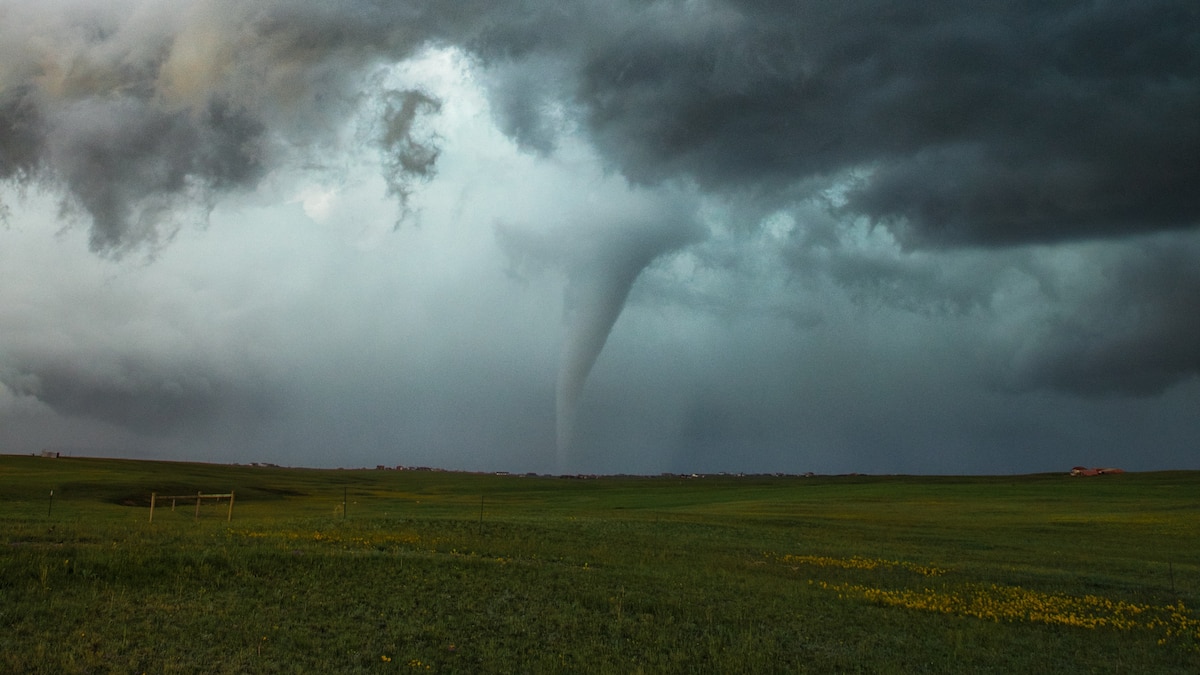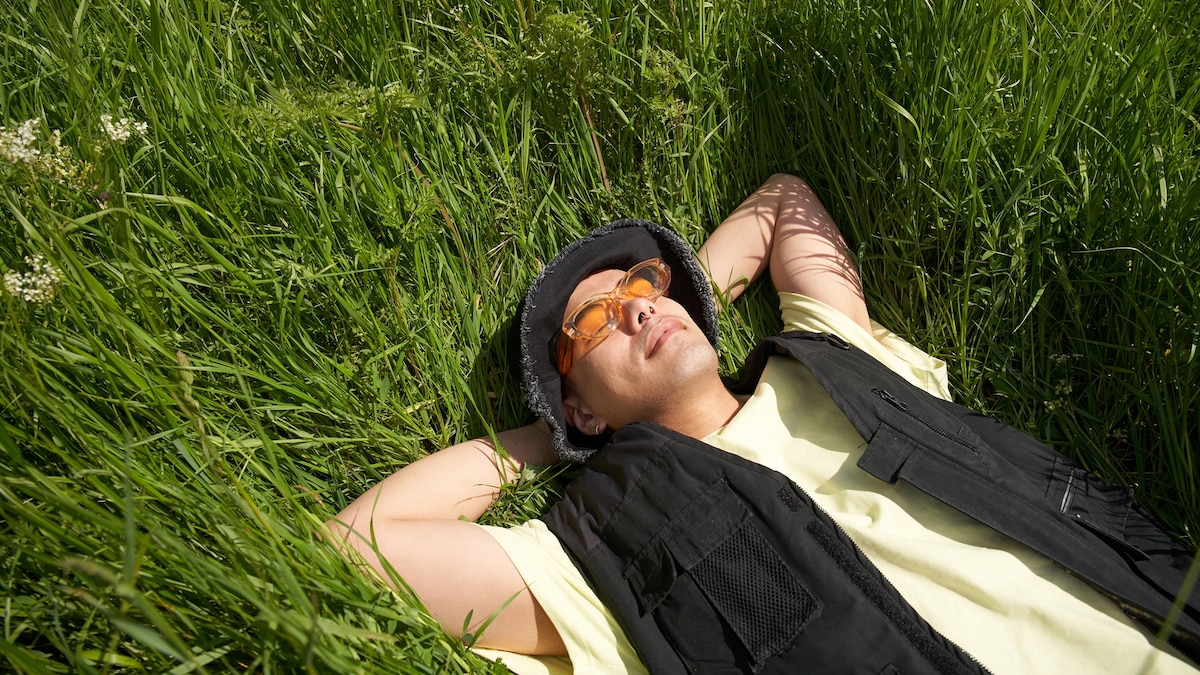Now Reading: How Lanzarote’s volcanic landscape has inspired generations of Canary Islanders
-
01
How Lanzarote’s volcanic landscape has inspired generations of Canary Islanders
How Lanzarote’s volcanic landscape has inspired generations of Canary Islanders

This article was produced by National Geographic Traveller (UK).
It’s just an hour past sunrise when I reach the rim of Caldera Blanca, a steep-sided hulk of igneous rock on the western flank of Lanzarote. The sun casts a reddish wash over the land. Up here — some 1,500ft above the broiling swell of the Atlantic — the only sounds are the wind and the waves, but the whole island is spread out at my feet. In all directions are dozens of other peaks, silent mounds rising from the jagged flatlands.
Three centuries ago, the summit I’m standing on didn’t even exist. In 1730, the ground began belching a morass of ash and lava across the island in a series of cataclysmic eruptions, covering almost a quarter of its entire area. Many villages had to be abandoned for good. The seismic activity went on to last more than 2,000 days, spewing fury from a vent in the earth’s crust and birthing countless new volcanoes, including Caldera Blanca. Today, the caldera’s vast, craggy summit feels prehistoric, yet it’s younger than St Paul’s Cathedral.
During the eruptions, a local parish priest named Andrés Lorenzo Curbelo kept a diary. He described gigantic mountains blooming like thunder from a fissure in the ground and “fiery lava streams descending like rivers”. The island was left with one of the rawest and most elemental topographies in the world; its cracked geology, lunar starkness and strange succulent plants meaning it now regularly doubles on screen as an extraterrestrial planet.
Magma has drawn me here. I’ve come to explore the island’s volcanic terrain, to find out not only how it fires the imaginations of many Lanzaroteños — the residents who call the place home — but how, in many cases, its lava-formed landscapes also get used as a resource. What looks bare and inhospitable to some becomes a realm of beauty and possibility in the eyes of many more. Artists adore it, winemakers prosper from it, walkers and cyclists roam its dark hillsides.
“The island has something magnetic about it,” explains my young guide for the week, Rocío Romero, her hair a blaze of red curls. “I grew up in Granada, but I came here eight years ago and realised I couldn’t leave.” In the afternoon, we seek out the nearby El Cuervo volcano, which is partially collapsed. Black stones crunch underfoot as cacti stand silhouetted in the middle distance; the sky is hot and cloudless. El Cuervo is gnarled and huge, its top jagged like torn paper. Walking inside through an opening, we find its crater dotted with straggly shrubs. “In Lanzarote,” says Rocío, “the land gets a hold of you”.

Walking inside [El Cuervo] through an opening, we find its crater dotted with straggly shrubs. “In Lanzarote,” says Rocío, “the land gets a hold of you”.
Photograph by Anna Huix

Caldera Blanca was left with one of the rawest and most elemental topographies in the world; its cracked geology, lunar starkness and strange succulent plants meaning it now regularly doubles on screen as an extraterrestrial planet.
Photograph by Anna Huix
The island is a paradox. Sitting around four hours by air from the UK — and more than five times closer to the disputed territory of Western Sahara than it is to mainland Spain — it has a population of around 160,000 and draws more than three million tourists a year. But while hotel-filled hotspots like Puerto del Carmen and Playa Blanca in the south are made for fly-and-flop breaks in the sunshine, the rest of the island has a different feel.
The 1730 eruption wasn’t the last volcanic activity to take place here, and it was far from the first. Lanzarote — along with neighbouring Fuerteventura — is the oldest of the Canary Islands, an underwater upheaval forcing its landmass above the waves some 15 million years ago. Volcanism created the island and has shaped it ever since, raising its cliffs, muscling out its contours and covering much of its interior in petrified, ankle-snapping lava flows known as malpaís: literally, badlands.
But humans have sculpted Lanzarote, too. This is a relatively small island, measuring 37 miles from tip to tectonic toe and 16 miles wide. The next day, as Rocío and I drive north past scattered hamlets — where palm trees and fat-branched euphorbia provide splashes of green — a uniformity in the architecture becomes apparent. Every house is either one or two stories high, flat-roofed and painted a dazzling white. Some have green trims around their doors and windows, others a cheery shade of blue. The overall impression is one of restraint, of perfect order among the geological chaos.
Lanzarote’s prevailing aesthetic isn’t just happenstance, says Rocío — it’s underpinned by the work of one person in particular. “This is César Manrique,” she says, pointing at a large tattoo on her upper arm: a man balancing what appears to be a giant sculpture on his outstretched hand. “You’re going to be hearing his name a lot.”

There’s more to the ash than meets the eye. “It draws moisture from the air and traps it,” says Ana de León, who runs the Bodega Los Bermejos, one of more than 20 wineries on the island.
Photograph by Anna Huix
A legacy in lava
The clock has just passed 8am, and cafe-owner Juan-Carlos Hernandez Betancor is preparing strong coffee and freshly squeezed orange juice, as he has done most mornings since 1987. He is garrulous, jolly company, and well he might be. His establishment, Bar La Piscina, has a plum location overlooking a natural seawater swimming pool — loosely walled in by volcanic rocks and, I can report, enjoyably bracing — in the sleepy east coast fishing settlement of Punta Mujeres. “This village,” he says, resting an espresso in front of me and raising a finger to emphasise his point, “is a kind of treasure. The calmness is special.”
On the street outside, a dog-walker passes by as the sun rises from the sea, spilling morning light onto flowered window-boxes. Juan-Carlos’s customers are mainly villagers, he tells me, to the point where he closes his doors at weekends. His Canarian cooking is renowned: dishes like grilled octopus, fried goats’ cheese with tomato marmalade, and spice-rich fish stews. As if to underline his credentials, he plays his Lanzarote trump card. “You know,” he says, “I was invited to prepare the food for the opening of the César Manrique Foundation.”
Two men can claim to have made an indelible mark on the island’s story. In 1312, Genoan navigator Lancelotto Malocello was the first recorded sailor from continental Europe to make landfall here. He encountered Indigenous islanders who used lava stones as mortars and crafted obsidian — a black volcanic glass — into hand tools. Sensing a chance to take power, he stayed for nearly 20 years, fleeing only when the locals rose up in anger. By then, however, he had named the island after his alias, Lanzarotus, which eventually evolved into Lanzarote.

The whitewashed fishing village of Punta Mujeres, home to several natural swimming pools.
Photograph by Anna Huix
Providing a far more recent, and altogether more welcome, influence was César Manrique, an artist, architect, sculptor, environmentalist and activist. He was born here in 1912 and spent time living and working in Madrid and New York — where he hobnobbed with Andy Warhol — before returning for good in 1966. Lanzarote, at that time, had a poor self-image. Islanders saw the burgeoning tourism industries on Gran Canaria and Tenerife and bemoaned the barrenness of their own home. Seeing things differently, and determined to bolster the public outlook, Manrique set out to form a kind of paradise among the volcanoes.
He did this primarily by using the landscape as a palette for his creativity, guided by the motto “art into nature, nature into art”. Given freedom to develop his ideas by the island’s government, he made underground worlds in lava tunnels and erected a spellbinding clifftop structure on the north coast: El Mirador del Río, a viewpoint over the humped islets of the Chinijo Archipelago, surrounded by twinkling blue seas. He also opened a series of panoramic restaurants specialising in local food, built monumental sculptures on roundabouts and turned a litter-filled quarry into a cactus garden. He even created a volcanic home of his own, complete with rooms in hardened lava bubbles. The house is now the César Manrique Foundation and has been open to the public since 1992, when the artist died.
Among his myriad projects, Cueva de los Verdes, in the island’s north, is the largest. A gargantuan tubular cave, it was created 3,000 years ago by a torrent of gushing lava, its top later solidifying into a waxy roof. Under Manrique’s guidance, the cave — around a mile of which can be wandered on foot — has evolved into a discreetly lit wonderland, soundtracked by drifting chants and classical music. In some places, the tunnel is more than 150 foot high.

Given freedom to develop his ideas by the island’s government, artist César Manrique made underground worlds in lava tunnels and erected a spellbinding clifftop structure on the north coast: El Mirador del Río, a viewpoint over the humped islets of the Chinijo Archipelago, surrounded by twinkling blue seas.
Photograph by Anna Huix

A gargantuan tubular cave, Cueva de los Verdes was created 3,000 years ago by a torrent of gushing lava, its top later solidifying into a waxy roof.
Photograph by Anna Huix
Centuries ago, islanders used to hide in this deep grotto to avoid pirates. “There’s no life down here,” says Rocío, as we enter. Estafilitos, or lava stalactites, dangle above and mighty-walled chambers loom ahead. We’re the first visitors to set foot in the cave all day. The air down here is cool and the mood of wonder profound. In the cavernous half-light, the island above is a foreign memory. “No birds, no bats, no plants. Just us.”
The nearby Jameos del Agua, meanwhile, was Manrique’s chance to celebrate Lanzarote’s volcanism even more extravagantly. Hollywood star Rita Hayworth called the site the world’s eighth wonder. It occupies another section of the same giant lava tube, with Manrique here focusing his attention on a series of large open-air cavities, known as jameos, where the tunnel had long ago collapsed. These areas he filled with lush foliage, fishing paraphernalia, bars, palm trees and whitewashed pools, as well as turning an adjacent part of the cave into a giant musical amphitheatre. Adding to the otherworldly ambiance is a natural lake between two of the jameos containing thousands of tiny blind albino crabs, a species found nowhere else on the planet.
Manrique’s creative appetite was seemingly insatiable (he also designed LagOmar, a rock-built complex in the centre of the island that was briefly the home of Egyptian actor Omar Sharif, who reportedly lost it in a game of bridge) but he was driven by far more than inventiveness. Determined to turn Lanzarote into somewhere that attracted appreciative, curious visitors, he also railed against the perils of fast profits and overdevelopment. “The island’s landscape,” he once said, pointedly, “is like a great symphony that requires time to be understood.”

One of César Manrique’s designs, the plant-filled LagOmar now operates as a bar, restaurant and gallery.
Photograph by Anna Huix
Art of the land
At El Diablo Restaurant in Timanfaya National Park, volcanoes take centre stage. Not only through wraparound windows — where ranks of scorched peaks rampage towards the coast, their iron-red sides streaked yellow with sulphur — but in the kitchen, which barbecues chicken using geothermal heat and serves volcano-shaped chocolate desserts sprinkled with popping candy. Outside, guides pour water into holes in the earth to stimulate the vertical steamy whoosh of a geyser.
The park itself is home to the biggest cluster of volcanoes on the island and the scenery’s widescreen, Martian sense of drama has undeniable appeal. However, as Timanfaya is inundated with visitors and can only be explored aboard a tour bus, I find myself craving the freer rhythms of the rest of the island, the quieter corners that Lanzarote offers in abundance.
A half-hour drive north past undulating volcanic ridgelines is the hamlet of Teseguite: home to the workshop of ceramicist Eguzkine Zerain. Her pieces are as raw and individual as the landscape: all uneven edges and organic shapes. When she invites us in, sunlight pours through the door onto shelves of hand-formed plates and bowls, each one intentionally imperfect. She tells me why she moved here from the Basque region 26 years ago. “The stones, the rocks, the wind, the space,” she explains, in soft tones. The front of her green T-shirt is streaked with clay. “Living here, I can’t control the impulse to create.”
Not far away, in the similarly serene village of San Bartolomé, Rufina Santana makes paintings on a grand scale. Her works are vast and colour-splashed, her spirit erupting from the canvas. “I am like a volcano!” she tells me, a grin playing on her lips. “The power you find inside the mountain — that’s my character. I feel the island. I feel its generosity. I feel the weather. When I paint, it all just comes out.”

At Timanfaya National Park, volcanoes take centre stage — ranks of scorched peaks rampage towards the coast, their iron-red sides streaked yellow.
Photograph by Anna Huix
Her creative process is aided by spending an hour swimming in the ocean every morning. This seemingly works wonders, given that her paintings now decorate high-end hotels and galleries around Lanzarote. “César Manrique came here once and bought one of my paintings,” she recalls happily, as her Jack Russell, Milo, scampers around the studio. “He was an old man then, but he loved art.”
Others make their living from the land via more practical means. On the east coast, a grid of salt flats laid out in 1895 still produces huge piles of salt, evaporated from a natural seawater lagoon that was formed by a lava eruption. In the north, Europe’s largest organic aloe vera plantation sits among thorny argan trees. And in the La Geria region, in the island’s heart, it’s all about the wine.
Nothing quite prepares you for the sight of a Lanzarote winery. Each vine sits in a separate, funnel-shaped hollow, dug into the dark volcanic ash and ringed on one side by a small stone barrier, to protect the plant from the northerly trade wind. The sight of hundreds of these rocky hollows studding the same hillside, some more than 10ft deep, gives the feel of a ruined Stone Age village. But there’s more to the ash than meets the eye.
“It draws moisture from the air and traps it,” says Ana de León, who runs the Bodega Los Bermejos, one of more than 20 wineries on the island. Out among the vines, Ana picks up a handful of picón — the gritty volcanic ash that sits above the soil — and lets it fall through her fingers. “This is what helps the wine.”
The dominant grape is the white Malvasía Volcánica, with some vines on Lanzarote dating back more than 200 years. Canarian wine was a favourite even back in the Elizabethan era — it’s mentioned in three Shakespeare plays — and still wins devotees. “Only 10% of the island’s wine gets exported these days,” explains Ana. “After all, we have a lot of thirsty locals and visitors.”
She pours me a glass of the bodega’s white, which frosts the glass instantly. The land that grows Lanzarote’s grapes looks hard and unforgiving, yet the wine itself gives off an almost floral scent. The taste is vibrant, aromatic and fresh, but there’s something flinty and mineral about it, too.
After our pre-emptive sundowner, Rocío drives us to beautiful Famara Beach in the island’s northwest to watch the sunset. Some of the best-looking beaches in Lanzarote are lined with hotels and shops, but here there’s just a row of campervans, some low dunes and a group of surfers in the ocean swell. Waves crash in from the Atlantic, unhindered, and above a row of dark pyroclastic peaks, the western sky is aflame with a lava-like palette of red and orange. Forged by the heat of the underworld, this island still knows how to put on a show.
Published in the May 2025 issue of National Geographic Traveller (UK)
To subscribe to National Geographic Traveller (UK) magazine click here. (Available in select countries only).



























